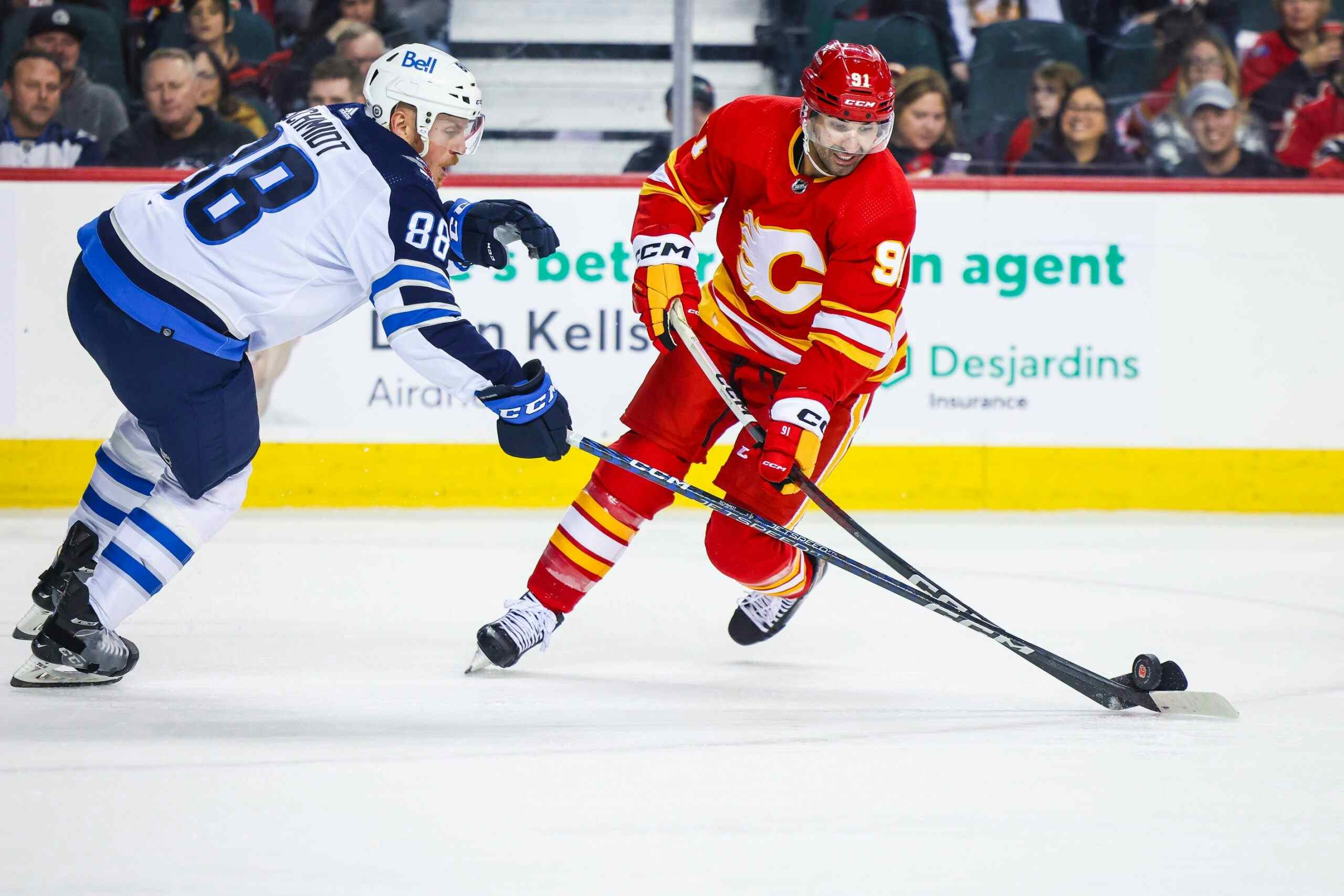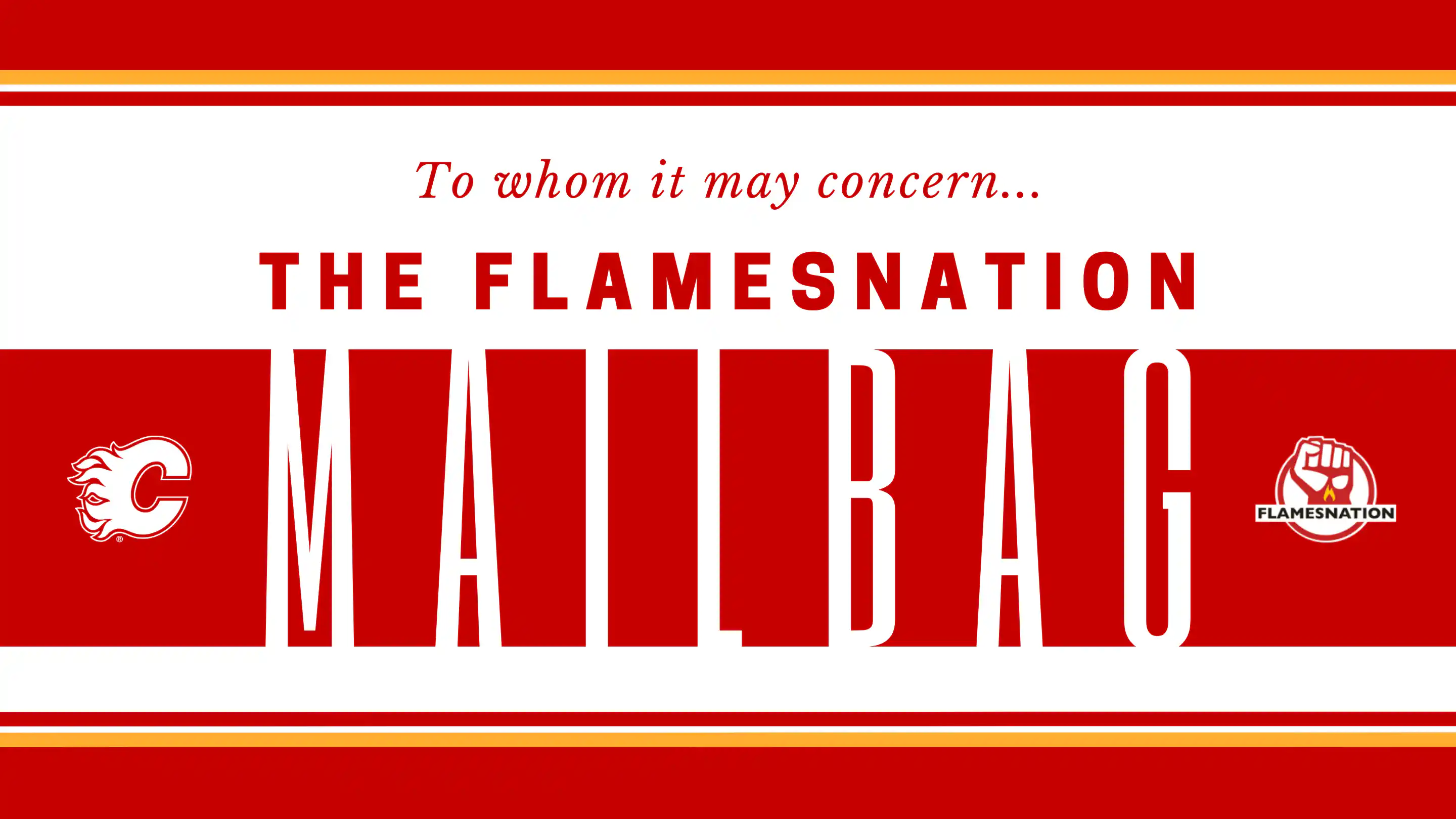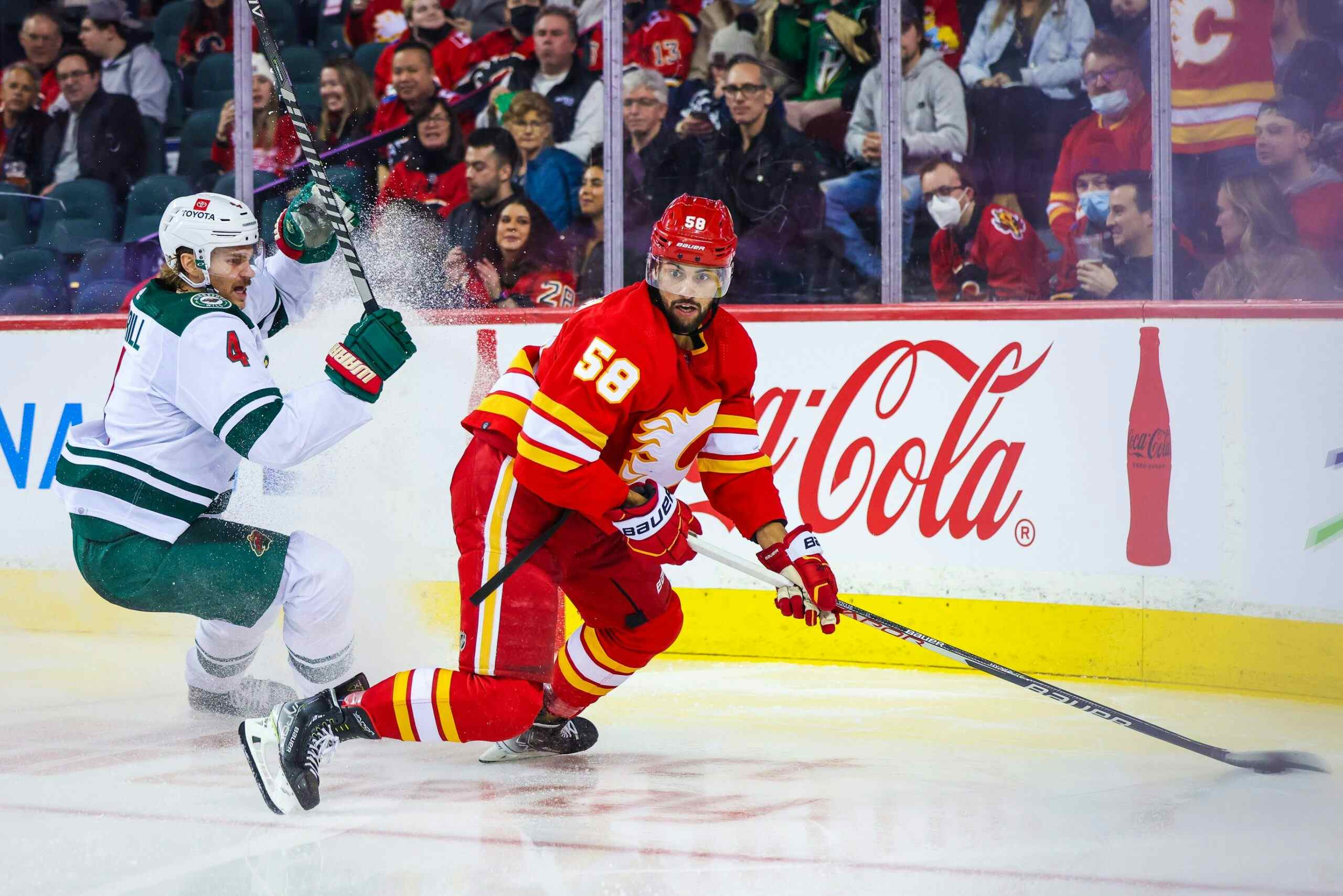Johnny Gaudreau, Josh Jooris, Markus Granlund, Micheal Ferland, rookie impressions, and their futures
By Ari Yanover
8 years agoPreviously, I looked at Flames sophomores, and how their second years compared to their firsts. That’s leaving out another young group, though: a group composing entirely of first years, all of whom hopefully have promising careers ahead of them.
This past season, four Flames forwards lost their rookie status. Johnny Gaudreau played 80 games, Josh Jooris 60, Markus Granlund 48, and Micheal Ferland 26: all enough to officially make them sophomores for the 2015-16 season, whether they spend it in the NHL or not. Of the four, Granlund is the only one to have played earlier, but his seven games from 2013-14 weren’t enough to count.
In one way or another, the four made names for themselves throughout the season. Gaudreau was the best rookie of the year, and will hopefully soon receive a trophy proclaiming him as such. Ferland stole the show and had a league-wide spotlight shown on him for the first round of the playoffs, and became a public enemy for a divisional rival. Jooris and Granlund are less heralded, but Flames fans certainly know who they are by this point.
So, how’d they do? And what’s next?
Offensive potential
There were a lot of questions as to where the scoring was going to come from this past season, and with no established offensive superstars, justifiably so. With 11 10-goal scorers, though, that question got answered handily: depth would lead the way. Depth, including the occasional youngster.
| Goals | Assists | Points | Games | Points per game | |
| Johnny Gaudreau | 24 | 40 | 64 | 80 | .80 |
| Josh Jooris | 12 | 12 | 24 | 60 | .40 |
| Markus Granlund | 8 | 10 | 18 | 48 | .38 |
| Micheal Ferland | 2 | 3 | 5 | 26 | .19 |
Gaudreau is the clear leader of the pack. He was second on the Flames in points through the regular season, after all, and no rookie scored more than he did over the year. To think that he scored at a .80 point per game pace in his first season is incredible, and speaks to just what we can look forward to from him. This probably isn’t his best at all.
The other three rookies, however, have significantly less to show. They didn’t get to play in Gaudreau’s first line situation, but there’s a reason for that: they don’t have the offensive talent he does.
Jooris and Granlund are pretty close to one another, although Jooris showed a little more over more games. That said, he averaged more minutes than Granlund, and he’s got a few years on him, so it balances out. While neither looks like a top scorer, if they can grow into secondary scoring roles, that’ll definitely be a victory for them and for the Flames.
Ferland is in a completely different boat, as it took him longer to make the NHL this past season than it did the other three rookies, and it took him longer to start scoring. He played fewer games and fewer minutes, and didn’t really get the chance to show his offensive potential.
It’s something he definitely has, though. Ferland didn’t score a lot in his draft year, but he became a point per game player, and then eclipsed that, soon after in junior, and has put up modest points in the AHL.
Granlund put up pretty good numbers in Finland, and is nearly a point per game player in the AHL. Gaudreau has been, of course, amazing throughout his entire hockey career, and while he probably won’t achieve the two points per game in the NHL he did in his junior year, a point per game probably isn’t out of the question.
Jooris’ offence is the biggest surprise, as his scoring was modest in college, and didn’t look NHL-ready in his first AHL season, but hey – nobody was expecting him to have the season he did, anyway. His 13.5% shooting percentage is a little high, but not unrealistic to maintain.
Finding their spots on the team
Gaudreau’s role already seems firmly established: he’s a first line, top scoring winger, and that’s probably not going to change any time soon. Jiri Hudler was at his opposite all season long, and once Sean Monahan joined them down the middle, things clicked. There’s always a chance things could change thanks to the Flames’ incoming centre depth – namely, Sam Bennett – and Hudler’s age, but for the most part, Gaudreau’s role is already set.
When it comes to Jooris, though, things are less clear. He was all over the place throughout the season, from centring Gaudreau and Hudler to spending significant time with Joe Colborne, Mason Raymond, Curtis Glencross, Lance Bouma, Paul Byron, and Brandon Bollig. To put it simply: he played with first liners and fourth liners, as both right winger and centreman.
That’s a pretty good thing for Jooris, actually. It plays to how ridiculously versatile he is. He may not be scoring at the pace of a top six guy, but he can play with them. He scores more than a fourth liner, as well, but his game is perfectly suitable to a bottom six role. While if anything, Jooris will probably settle as a bottom six depth player, the fact that he’s so malleable and can play in just about any position in the lineup is a huge advantage.
(For the record, Jooris’ points don’t come from Gaudreau and Hudler – only six of his total 24 points came as a direct result of playing with them.)
Granlund, like Jooris, bounced around a fair amount as well, but never really spent time on the fourth line. He, too, centred Gaudreau and Hudler (and unlike Jooris, was more dependent on them for points – while a quarter of Jooris’ scoring game from them, nearly 40% of Granlund’s did). He also spent significant time with Byron, Raymond, Colborne, and even Ferland.
While Granlund operated on a similar level as Jooris, Jooris was definitely a step above: scoring more, doing more on his own, and achieving it with a greater cast of characters, some of whom were definitely inferior.
With Ferland, there’s so much less to judge, and we probably haven’t come even close to seeing the best of him. Ferland played extremely limited minutes in the regular season, but in the playoffs, he found a home alongside two reliable veterans in Matt Stajan and David Jones. That could very well be the opening third line next season.
What’s in store for next season?
One last, important thing to look at is just how the rookies were used, and how they performed in their roles. From the regular season only:

No surprise, again, that Gaudreau posted the best possession stats of the bunch. Here, though, there’s additional context as to just how that happened. While he did face the toughest competition of all Flames rookies – which, of course he did, as teams quickly learned they were going to have to do everything in their power to stop him – he was also the beneficiary of sheltered, mostly offensive zone starts.
That’s not a knock on his defensive abilities, though; it’s more a commentary that he’s here to score, and starting him most often in the offensive zone gives him the best chance to do just that.
This is also where the chasm between Jooris and Granlund really deepens. While at first glance, they looked similar, the gap started to form when comparing their linemates, and now, here, it’s fully realized. Both were used in similar positions – mostly sheltered – but while Jooris performed well, Granlund floundered.
While Jooris was ready for the NHL this season, Granlund was not, and it showed as the games went on. I suspect the Flames’ original intention wasn’t to have Granlund play so many NHL games, but injuries forced their hand, leaving an ill-prepared rookie to take on a role he wasn’t yet equipped to handle. If anything, Jooris should stay in the NHL, and Granlund spend more time in the minors.
That leaves just Ferland, who turned out to be a pleasant surprise, even before the playoffs. He played low competition, but he was the only rookie to not be the beneficiary of so many offensive zone starts, which helps explain his significantly lower point totals.
With him, however, it’s especially important to remember he only just barely lost his rookie status, so there’s a lot less to judge him off of. As it stands, though, things are pointing towards good things for him.
So, all in all: we probably already know where Gaudreau stands, and it’s awesome. Ferland still has a lot to show, but for the meantime, it’s looking good. Jooris’ future role remains unclear, but he’s probably going to be a useful player; and Granlund, even less clear, because in all likelihood, he wasn’t yet ready.
Maybe next season.
Recent articles from Ari Yanover





